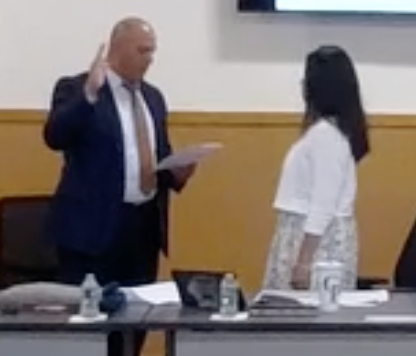January is Human Trafficking Awareness Month and while it’s been denounced as a global problem, many may not know it also occurs in Nassau County.
“Human trafficking happens everywhere, including here on Long Island,” said Tabitha Gallerani, director of the Anti-Human Trafficking Department at The Safe Center LI. “It happens not just in urban settings but rural and suburban. At this point, there’s no denying it’s an issue that affects a lot more people than the general public would assume.”

Human trafficking, the exploitation of a person through force, fraud or coercion, falls into three categories—sex trafficking, forced labor and domestic servitude. According to Karen Garber, spokesperson for the Nassau County Department of Social Services, human trafficking has been recognized both in the state and across the country as an “under-identified” issue.
With the help of a state grant, the county started a campaign in 2014 to raise public awareness of just how real of a problem this issue was. Since then, 253 children in Nassau County have been identified as possible victims of human trafficking.
“We started the campaign so people are aware of what to look for, what the signs are,” Garber said. “Once you identify youth that may be trafficked, you can treat them as victims and find help for them. That’s really the push.”
 One of their main objectives is training stakeholders to be able to better identify signs that a youth in their care has been trafficked. Potential red flags include if a teen has an excess amount of cash, hotel keys, an unexplained cell phone, is a chronic runaway or if they go inexplicably missing and then return with their hair and nails done. For young victims of labor trafficking, they may be excluded from family events, may be physically exhausted or fearful of the family they live with.
One of their main objectives is training stakeholders to be able to better identify signs that a youth in their care has been trafficked. Potential red flags include if a teen has an excess amount of cash, hotel keys, an unexplained cell phone, is a chronic runaway or if they go inexplicably missing and then return with their hair and nails done. For young victims of labor trafficking, they may be excluded from family events, may be physically exhausted or fearful of the family they live with.
The Safe Center LI’s Anti-Human Trafficking Department works to create a county-wide response to help adult and youth victims and those who are at high risk for human trafficking. Services include counseling, advocacy, safe housing, legal assistance and a 24/7 hotline. The center’s Safe Harbour program, which is contracted with the Nassau County Department of Social Services, provides services for high–risk and identified youth.
“We have created a protocol for children in the child welfare system to be connected to appropriate services,” said Serena Curry, The Safe Harbour coordinator.
According to Nassau County, it is estimated that more than 100,000 children in the United States are at risk of being trafficked for commercial sex each year. Youths at greater risk often have unstable family situations and little or no social supports. Runaway and homeless youths, children involved with child protective services and foster care, as well as lesbian, gay, bisexual and transgender youths are also at increased risk for exploitation and trafficking.
Garber says when the county first started addressing trafficking in 2014, they only found 29 cases. But now that they’re better trained, they see how much of an issue it is.
“In 2014, we thought it was a very small number,” Garber said. “But the more we made sure our child welfare staff was trained in subtle signs—like dressing differently, or having an unexplained cellphone—now that we’ve expanded our knowledge base, we see it’s always been there. Now we’re aware of the subtle finds.”
The dome of the Theodore Roosevelt Executive and Legislative Building will be illuminated in blue the week of Jan. 8, in honor of Human Trafficking Awareness Month. On Jan. 11 from noon to 3 p.m. The Safe Center LI will screen a documentary regarding young women sexually exploited and forced into prostitution, with a panel discussion following the film. Those interested in attending can RSVP to Serena Curry at scurry@tscli.org.

































